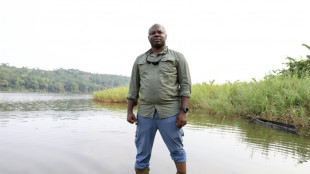

First step for Europe's hyperloop vehicles with test launch
The dream of hurtling between European cities at speeds of more than 700 kilometres per hour moved a step closer Monday with the first successful vehicle tests at the European Hyperloop Centre.
Hovering inside a sleek 420-metre (1,377-foot) white tunnel, a dark and light grey striped pod levitates at the order from the mission control centre, before powering away using magnetic propulsion and with no one aboard.
For the moment, the speed is relatively slow at 30 kilometres (18.6 miles) per hour but operators hope to reach 100 kph (62 mph) by the end of the year as they race towards rolling out a system by 2030.
"We will be ready to transport passengers in a vehicle like that by 2030," Roel van de Pas, commercial director of Dutch firm Hardt Hyperloop, told AFP in an interview.
Amsterdam to Berlin in 90 minutes or Milan in two hours -- the technology has the potential to revolutionise travel in Europe, believes Van de Pas.
SpaceX and Tesla founder Elon Musk brought hyperloop into popular culture with a 2013 paper proposing a "fifth mode of transport" linking San Francisco and Los Angeles.
But several attempts to roll out the technology have failed, including by British tycoon Richard Branson, and critics say "hype" is the pertinent part of the name "hyperloop".
Not so, says Van de Pas. "It's really going to change the relationship that we have within Europe. It's really going to integrate the continent," believes the 39-year-old.
- 'Barf ride' -
Monday's test launch took place in front of 300 guests, including Prince Constantijn of the Netherlands, watching on a big screen with the mission control comms piped in.
The next stage is to test under full vacuum conditions -- nearly all the air is sucked out of the tunnel to reduce air resistance -- and gradually increase the speeds.
The European Hyperloop Centre is the world's only facility to feature a "lane switch", a tunnel branching off from the main track.
It allows scientists to test rapid course changes -- vital for creating a network.
Hardt Hyperloop hopes to start testing the lane switch soon with vehicles and eventually build a bigger centre to enable the pod to reach the dizzying speeds possible.
The eventual aim is to replace short-haul European flights and long drives across the continent, with ticket costs probably comparable to a low-cost airline, said Van de Pas.
A successful roll-out of a dense hyperloop network would also provide a substantial environmental boost as well.
A hyperloop system uses around one 10th of the energy of aviation and one third of a railway, as well as being completely noise free as it's enclosed within the tunnel.
The tunnels could be placed alongside existing motorways, and the European Hyperloop Centre has already experimented with blending into the environment, painting one part of its tunnel to make it look like a forest.
One concern often raised is the passenger experience. Screaming through a narrow tunnel at the speed of sound may not be everyone's idea of a comfortable ride.
Transport blogger Alon Levy famously described Musk's initial proposal as a "barf ride".
But Van de Pas promised a smooth journey.
The vehicles, which will eventually carry 50 or so passengers, will have the same sort of vibration and comfort levels as modern trains, he said.
China already has a test facility enabling speeds up to 700 kph but Van de Pas welcomes the global competition.
"We need good competitors and we are all pursuing the same mission. We want to make travelling these long distances a zero-emission effort," he told AFP.
"We look at what our competitors are doing and they look at us and together we are building an industry."
R.Collins--RTC


